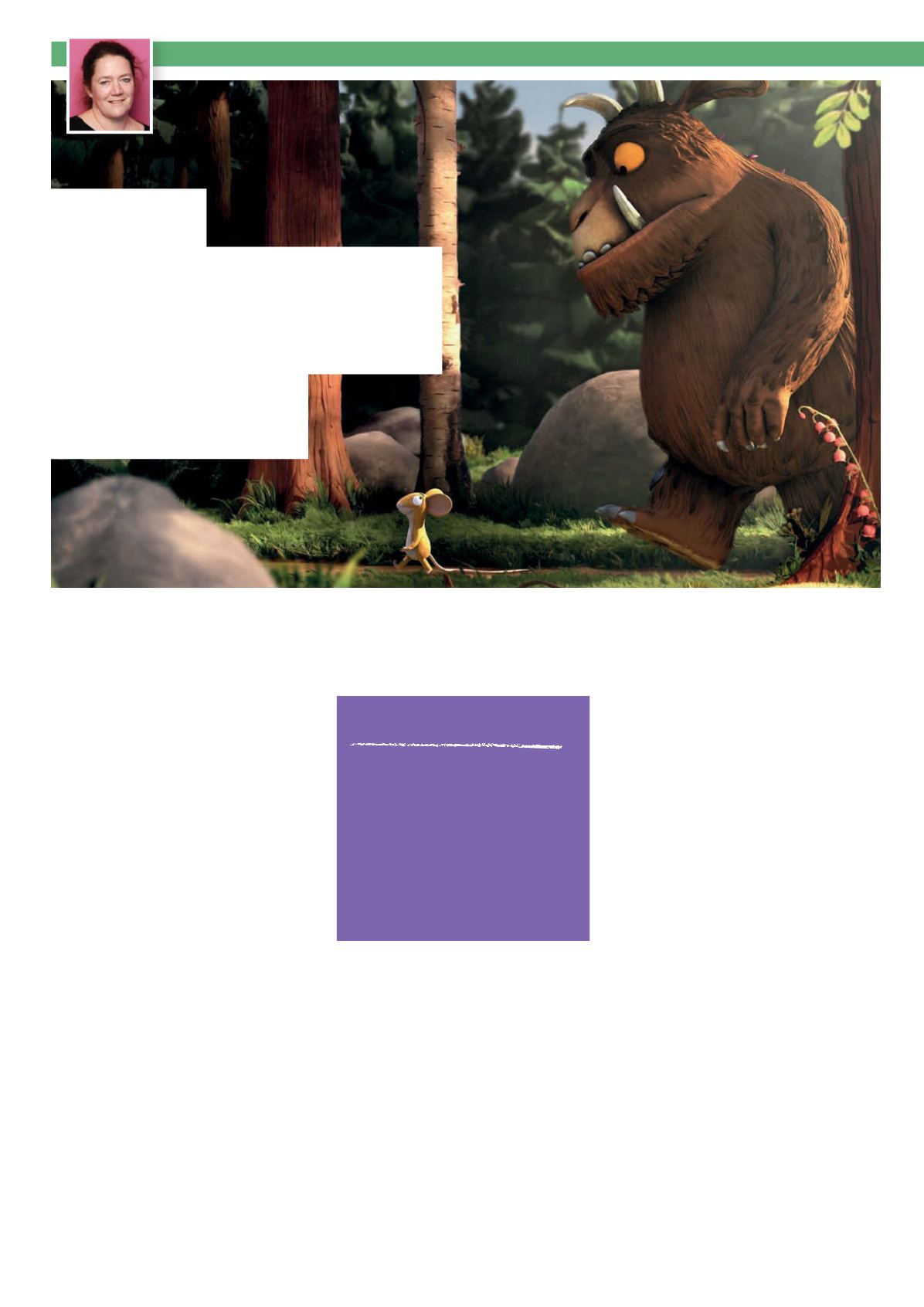
42
TEACH READING & WRITING
The
SCREEN
TEST
Moviesmake a great endof termtreat – and a powerful
tool for teaching literacy all year long, says
Jane Fletcher
F
ilm– amediumthat is accessible
and appealing to all – is often
overlooked as a seriousmeans
for literacy learning.
Many
teachers have little formal
training on how to integrate it into their
practice, consequently its use is often
limited to a starter activity or as an ‘add-
on’. Indeed, it can sometimes be perceived
only as away to engage reluctant or less
able learners – however, feedback from
those alreadyworkingwith themedium
shows that when it’s placed at the heart
of the curriculum, filmcan significantly
improve literacy across the board.
For example, the Leeds Partnership
Project: Improving Literacy Through Film
(2014/15) – a programme developed to
train lead practitioners in usingfilmto
support raising literacy across ten primary
schools in Leeds – recorded a 96%
improvement in average points’ progress
in reading, and a 60% improvement
in average points’ progress inwriting
in pupils regularly engagedwithfilm
watching andfilmmaking.
The followingfilm-based activities
provide learnerswith opportunities to
articulate their responses to text and
demonstrate and develop their literacy
skills. Why not try themwith your Key
Stage 1 and 2 pupils?
1
Choose a short (maximumtwominutes)
sequence fromafilm– preferably
onewhich contains a variety of different
sounds and has little or no dialogue. Play the
soundtrack, without images, twice through
for pupils to listen to, encouraging themto
identify the different sounds they hear.
2
Lead discussion using questions like:
Is theremusic in thefilm? Are there
moments of silence?Was it quiet/Was it loud?
What instruments could you hear?Was it fast/
was it slow?Was there any speech/dialogue?
Howdid the soundsmake you feel?
3
Ask pupils to respond to the clip,
by thinking about andwriting downwhat
they heard andwhat theywould expect to see.
Encourage pupils to consider all the Cs and Ss
–what colours are they imagining?Whenwill
they see a close-up or an establishing shot?
What characterswill there be?What does
the setting look like?Where andwhen
is the story taking place?
4
Nowask pupils to demonstrate
their ideas by drawing a picture of the
scene and labelling it with descriptions of the
sounds, using paper and colouring pencils or an
app like Sketchbook Express.
5
Finally, watch the clipwith the images.
Take a still fromthe sequence and ask
pupils to imagine thiswas a book, and towrite
the opening/closing paragraph or chapter to
explain the story for the reader.
This activitywill help learners to ‘hear’ sounds
when they read andwrite, and support deeper
analysis and construction of richer texts.
JANE FLETCHER
is education director at Into Film
ACTIVITYONE
SOUNDON/VISIONOFF
PUPILSWILL
∆
Demonstrate and develop active
listening skills
∆
Deduce and infermeaning and
consider purpose of afilmtext
through analysis of sounds
∆
Demonstrate prediction and
encoding skills
THE3Cs&3Ss
The 3Cs (colour, character, camera)
and the 3Ss (story, setting, sound) are
features of all filmtexts. They can
be used as a basis to deconstruct or
construct any text, and build on pupils’
prior knowledge and engagement with
a variety of visual media froma young
age. A full list of useful 3Cs and 3Ss
discussion questions can be found at
intofilm.org/resources/127.


